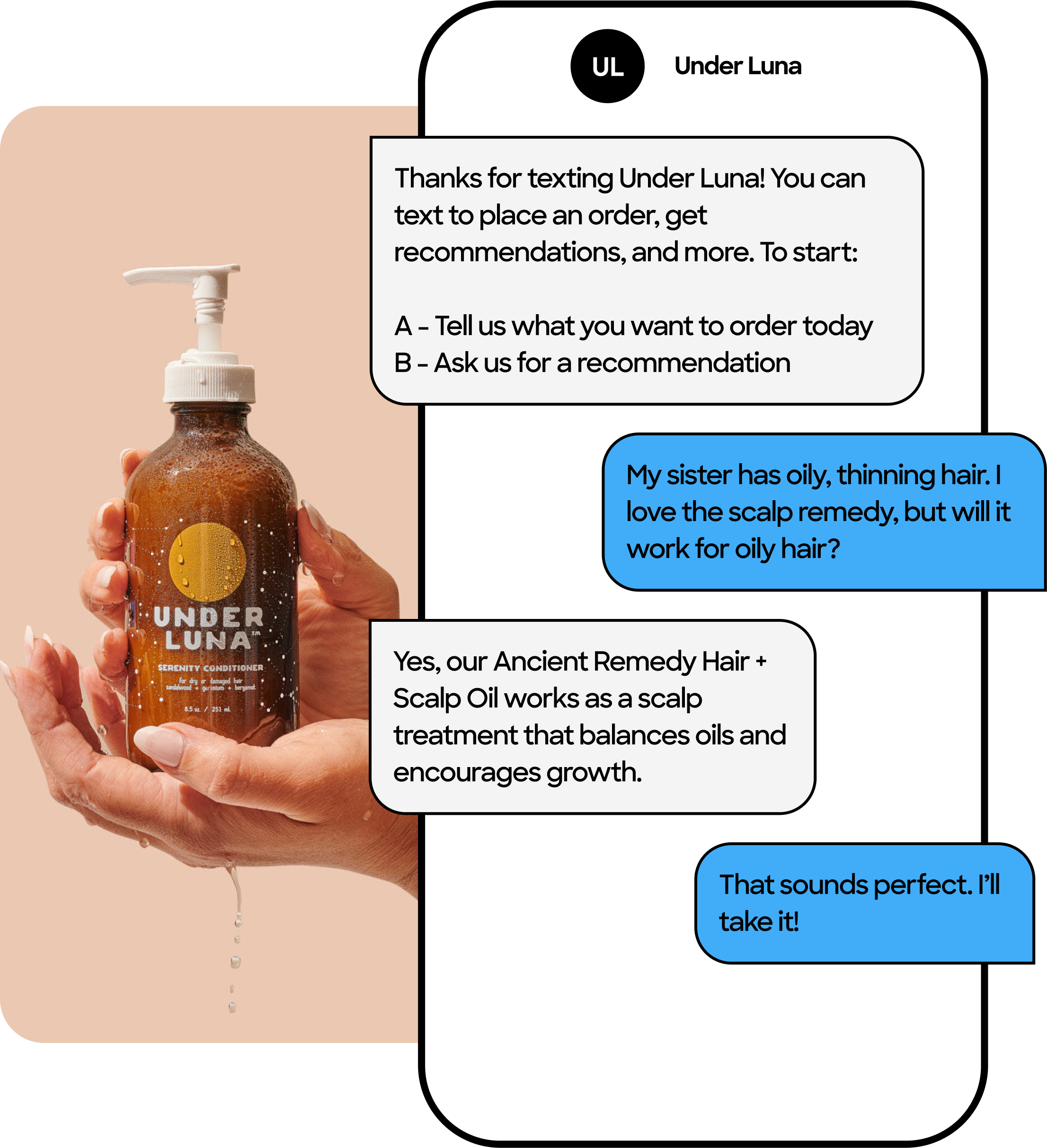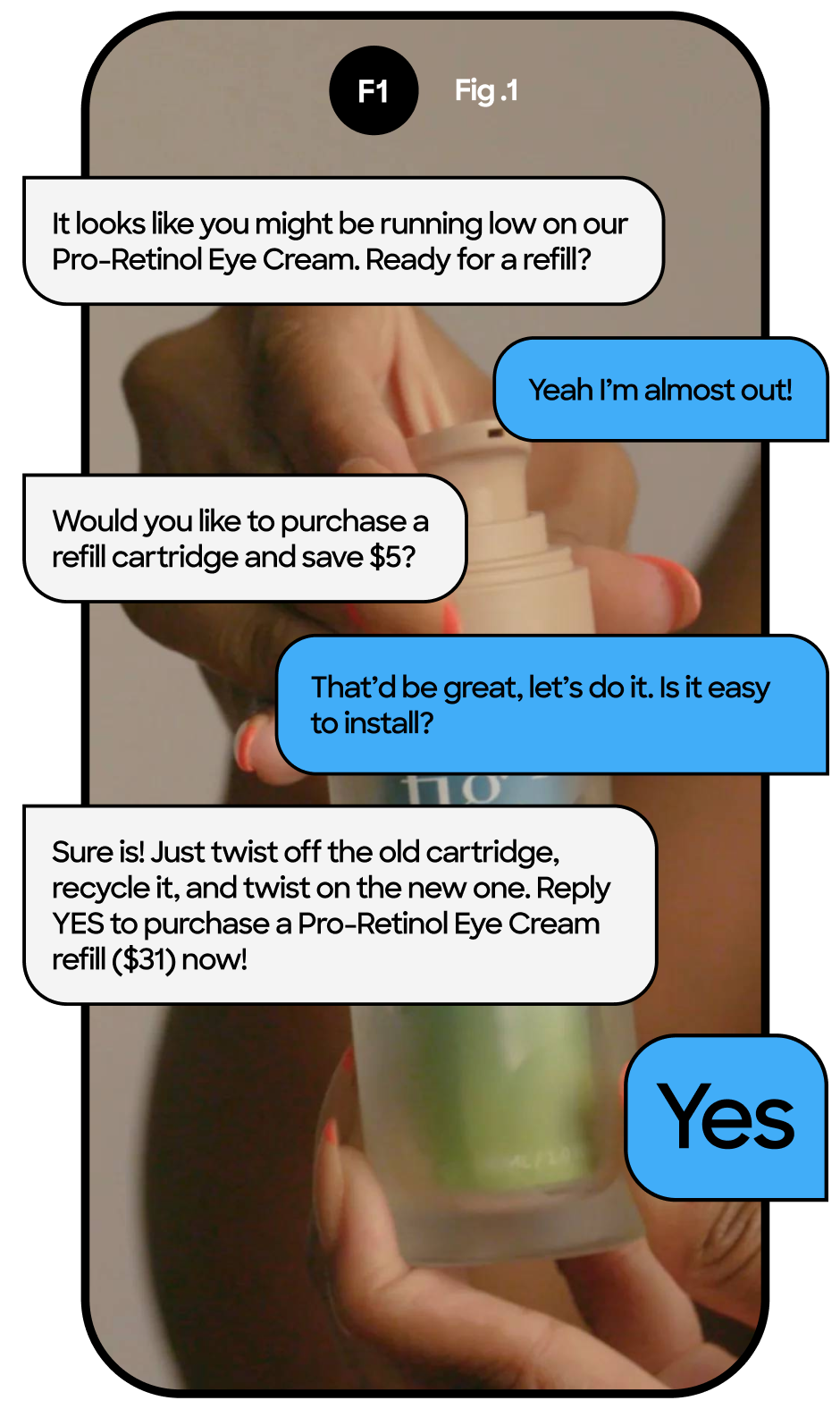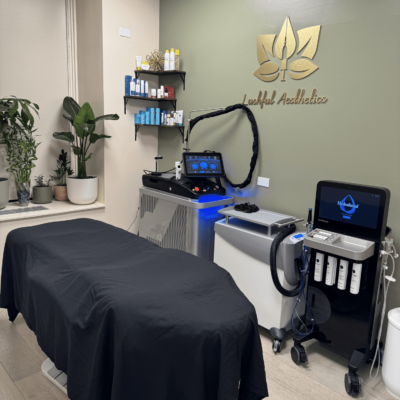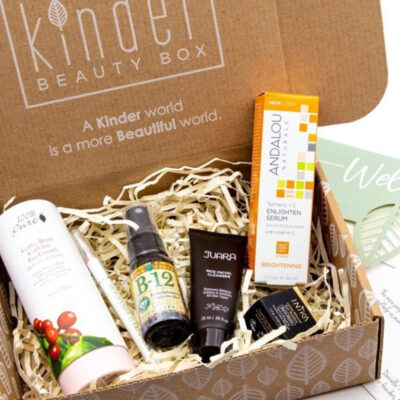
Why Marc Lore-Backed Wizard Believes Text Is The Next Big Thing In Beauty Shopping
SMS isn’t just for marketing anymore. Wizard is betting beauty shopping will accelerate at the speed of a text as conversational commerce revs up.
The Marc Lore-backed text commerce company has kicked into high gear with next-generation language processing tools like ChatGPT paving the way for more frictionless interactions between humans and artificial intelligence. Launched in 2021, its platform, which is leveraged by beauty brands as well as those in the health and wellness, food, beverage, baby and pet categories, enables customers to shop and transact via SMS messaging.
“You’re really seeing what we call SMS 2.0 now, which is that two-way interactive experience,” says Wizard CEO and co-founder Melissa Bridgeford, former CEO and founder of conversational commerce company Stylust. “That means being able to search over text, being able to create your cart over text, being able to check out over text, being able to create personalized interactions that both are inbound and outbound.”
Investors are energized by the prospects of conversational commerce. Ahead of its launch, Wizard announced that it had closed a $50 million series A round. Along with Lore, who formerly headed Jet.com and Walmart’s e-commerce business, the company is backed by venture capital firms Accel and NEA.
Wizard isn’t alone in thinking text shopping is the next big thing. Large and small players are entering the market, too. Walmart introduced a Text To Shop feature last December after beta-testing it for over a year in select markets. Wowtext, digital media company PureWow’s text shopping service, bowed in early 2022, and 213deli, a new text commerce offering from three Ipsy alums, is launching Wednesday.
To better understand the future of text commerce, Beauty Independent spoke with Bridgeford about how Wizard is working to create better experiences with texts, the reasons the United States lags in adopting text shopping and why the beauty industry is ripe for conversational commerce.
What’s Wizard’s value proposition?
We cover the entire customer journey from opting in on the text all the way through the marketing, the search and discovery, the checkout and the post-purchase journey, tracking orders, and then all the reminders and new orders. We actually have a new AI product that infuses ChatGPT into our product. It’s a fully automated experience where you can search and discover products over text with a ChatGPT-like experience.
It’s actually more powerful than ChatGPT because the models are based not just on the web, but also on our proprietary information. This creates a more powerful Q&A to guide people through a sales process. It hands back and forth to our automated system to complete the cart creation and checkout. To the extent there’s anything that our system can’t answer, it hands it off to a human. So, we have a human team that can answer the questions for merchants, or we can hand it off to the brand’s customer service of choice like Gorgias, for example.
We’re really excited about where that is within the market, and we really see that as a huge trend that’s coming to the U.S.

Discovering products is usually a visually driven experience, whether it’s on the web or in a store. Can a customer get the same experience over text?
You can already send rich visuals, JPEG-style, through SMS that show, “Here’s the Lancome moisturizer that you’re looking for,” or “Hey, here’s a new Supergoop sunscreen for the beach.” You can also send, let’s say, four pictures where you can reply with 1, 2, 3, 4 to learn more about the item.
But what we think is critical is not just that visual, but also the interactive aspect with that visual. So, being able to add something to your cart because you tap on it within the messaging channel. To be able to offer that so that you can, almost in a carousel manner, look at a couple things and add one item and then keep going.
It’s so important to have that rich visual experience when shopping, even if it’s from a confirmatory basis to be able to say, “Oh yeah, that’s the item I want.” There are a couple different technologies that we’re working on integrating into the experience so that when you click on the text, you’re actually looking at a more web-like experience, but it’s in your text. This is also similar to what WeChat did. When you go on shopping on WeChat, it feels like you’re on the web even though you’re not.
Why hasn’t text commerce been more widely adopted in the U.S.?
In general, I think Asia adopts technology trends faster like WeChat in China and Gupshup in India. I think the U.S. has been lagging in part because we really grew up on the web, and most of those countries were mobile first and didn’t grow up on the web as much. I also think there’s a lag in terms of the technology and that adoption taking place here.
In some ways, it’s really advantageous that we follow because you can see how the technologies are adopted and you can adjust to those. We think of SMS marketing, which has been around for a long time now, as SMS 1.0. We can also see that consumers and merchants are generally tired of SMS 1.0 because it’s spammy and promotional and, in some ways, it’s not that technologically advanced. You’re just essentially getting spammed with links that send you back to the web.
Merchants that we talk to want an elevated interactive experience for their consumers. They want to offer that because, in part, consumers want that personalized experience with brands. They’re starting to see which companies offer that and making decisions based off that.
I often use the example of United Airlines. They have really great two-way SMS, which is really helpful for me when I take my dog on a plane. If I fly with another airline, I have to call and every time you call, they’re experiencing high volume. So, I choose United in part because I know I can text them and say, “Hey, I need to add my dog to my reservation.” They say, “No problem,” and they get on it right away.
You’re seeing this happen in other sectors now, too. Consumers really want to interact with brands. We were recently looking into this and 80% of consumers are more likely to purchase from a brand that provides a personalized experience. According to McKinsey, 71% of consumers expect companies to deliver personalized interactions and 76% get upset when it doesn’t happen. Once a customer has a great experience with a company, they’re not going to tolerate others that they can’t interact with in the same way.
Is the U.S. starting to catch up?
Yes. It’s not a message that’s a batch-and-blast with links, but rather, “Hey, we think that you would like this product because of X, Y and Z.” Those smart product recommendations are really what most people are seeking and they’re seeking it in a mobile-friendly format now. That’s the experience that we’re really building for, and we’re really excited about.
I really don’t open my email spam folder or my promotional folder. I think that channel has become less and less effective, and people are now seeking that type of product discovery in a mobile format. They partially get that on the Instagrams of the world. They’re continuing to improve their algorithm so they can offer you better items.
But what we typically found and what Instagram is typically found is, when people go to a platform for inspiration or to be social, they oftentimes don’t want to also execute commerce. So, I think people are still discovering on Instagram, but they’re not necessarily converting there.

What about TikTok? It’s integrating e-commerce tools.
I could see TikTok being a little bit more successful with conversion because I think that people always say, “social media,” but, in reality, Instagram is more social because you have your friend group that you follow that follows you, whereas TikTok is less about friends.
It’s more like an entertainment channel where what’s on your feed is not necessarily your friends or even the people you choose to follow. Part of why you go there is to see content that’s new from people you don’t know. Social media is almost two separate things.
At what point in the sales funnel do customers opt into the service?
Most brands already have a list of subscribers to their one-way SMS 1.0 channel, so transitioning over to SMS 2.0 with a list migration is seamless. Brands can also grow their SMS subscribers list via their website like on product pages or at checkout on their social media platforms and on QR codes on packaging.
Today’s beauty consumers, for example, are discovering products on TikTok, trying out the sample in store at Sephora and later converting on mobile after asking a few questions over SMS. Winning brands are making themselves available to consumers at any point in the shopping journey and on every channel of communication across platforms like web, social and text.
Do you consider Wizard a customer acquisition tool as well as a loyalty tool?
Yes. Brands that make themselves available via text at the point of consideration are inspiring consumer confidence, reducing cart abandon and converting new consumers. At the same time, brands are using the channel to find new points of connection with existing customers by having authentic interactions and offering continuous, personalized product discovery. This means decreasing churn and improving customer retention.
Is Wizard investing in AI particularly around chatbots or are you relying on technologies like ChatGPT?
I think we all agree that the experience with chatbots going back several years has been super clunky and not great. If I’m on the phone, I just hit zero until I get an agent, or if I’m on a web chat, I just say that I want to talk to an agent over and over again. We definitely were not investing in that realm for that reason.
Natural language processing is changing all of that because it creates a more human-like experience. So, that’s really what a lot of ChatGPT and large language models have helped to shift. Chatbots were typically built in a different way. It was much more about defining the user flow, and that’s why it felt so rigid. Then, if it couldn’t answer a question or request within that flow, it would bump the conversation to an agent, but the goal of that chatbot was to try to reduce the agent’s load. So, it was trying to keep the customer going for as long as possible because that’s how they’re measuring the success of that chatbot.
We 100% agree that that’s not a great experience, so what ChatGPT and other technologies can offer is that more human-like experience. The goal is that the customer doesn’t know the difference. A year ago, that felt farther away, like several years away, but now technology has changed so much that that experience is here, and it’s going to continue to evolve.
I wouldn’t say it’s a 100% in terms of that human-like interaction, but it’s getting closer and closer every day. As I mentioned earlier, to the extent our system can’t answer something, it bumps to a live agent or an expert that can answer a question that’s more complex. Over time, we’ll be able to answer more and more complex questions that won’t be about picking A, B, C or D in a response. It’ll be able to respond in a natural way where it can understand not just like the words you’re writing, but the extent of the question you’re asking. That’s really where a big shift has happened away from the traditional chatbots.
The other aspect right now around technologies like ChatGPT is that you have to put parameters around the accuracy of the answers. That’s something that’s really important, especially in the beauty industry, being able to accurately answer about ingredients and things like that.

Why do you think text commerce is a good fit for the beauty industry?
Beauty really lends itself well to conversational commerce. There are so many beauty brands, so people are constantly looking to product discover. It’s got a high consumer annual spend with a high repeat purchase rate, whether it’s the same item or new items that are of a similar type.
Typically, beauty consumers have a few questions about a product, but otherwise it’s generally low consideration because the price points are lower than in other consumer sectors. Those factors really enable someone to purchase over text in a much easier format than, for example, buying a bigger ticket item like a TV.
I think a lot of beauty brands today are really focused not just customer acquisition, but customer retention and really increasing that lifetime value of the customer. If you can acquire a customer and they purchase once in a year, that’s great, but, if you can acquire a customer for the same price and they purchase three times in a year, that’s extremely valuable to the brand and the retailer.
So, a lot of those brands see conversational commerce as a way to really increase that repeat purchase rate while capturing people on mobile. For me, I have a list of things that I need to buy, but I can’t buy them unless I go sit on my laptop or a computer and spend time doing that, whereas if I could buy it on the go from the back of an Uber, I’d buy those items more often.
We have a number of different beauty brands on our roster like Aavrani, for example. They’ve seen a 20%-plus increase in their text sales over their web sales, which is really, really strong. Under Luna saw their text channel sales increase by around 10% in the first two months. Fig.1 has been a really great merchant for us with really high engagement. They’ve seen a 20%-plus increase in order volume and a repeat purchase rate of around 28% in text. There’s really strong stats in this space with beauty.
Is Wizard accessible to emerging brands with smaller budgets?
It’s great from an emerging brand perspective. A lot of the smaller brands like the fact that we have human agents because we’re essentially an outsourced customer service team for them. That makes us really attractive to brands that are looking to cut costs or maybe aren’t big enough to have their own customer service teams.
So, people that are asking about the status of their orders, for example, we handle that. We’re able to really provide that end-to-end experience and small brands really value that, especially at that early stage in their development.




